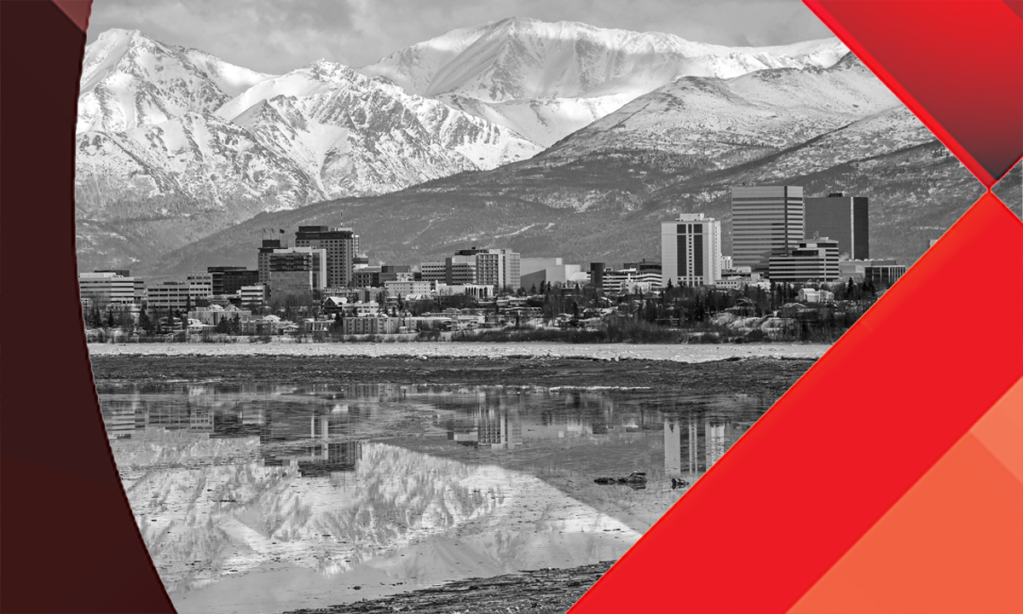
On Dec. 20, the sun set in Anchorage, Alaska at 3:41 p.m. local time, and the temperature sank to 10 degrees Fahrenheit.
But in a real estate economy that has made destination cities out of the likes of Boise, Idaho and Manchester, New Hampshire, perhaps it’s no surprise that there is nothing dark or cold about the Anchorage housing market. In fact, despite existing 1,400 miles north of the contiguous 48 states, Anchorage faces high-demand, decreased inventory and even a lack of space to build, issues familiar to many mid-sized American cities amid the Covid-19 pandemic.
“You’d be surprised at the amount of people who can just see past the snow and the dark,” Megan Daniel, a local Keller Williams agent said. “Things are still going strong here. We are above a 70% pending ratio [the ratio of pending listings to active listings], which is insane. Inventory is at an all-time low and demand is extremely high so we are still seeing bidding wars. Normally, we see a pretty intense seasonality shift with our winters here in Alaska being what they are and we are seeing a slight slow down from the absolute craziness of this summer, but not nearly as much as we would expect based on historical trends.”
The median November home sales price in Alaska was $350,250, which is slightly up from 1.2% in November 2020, according to a report from Redfin. The median sales price is down from a record high of $375,000 in June. But other agents echo Daniel that there is no market setback.
“Even when things were, what I would call, irrationally hot last December, the market slowed down just like it normally does. But not this December,” local Keller Williams agent Kristan Cole said. “Our team has had one of our best Decembers on record and definitely the best December we’ve had in a long time.”
The median days on market in November was 17, according to Redfin, much lower than the average of 80 days on market that Realtor.com reported in November 2019.
Older homes “are sitting longer than updated homes in desirable neighborhoods,” Daniel said. “The more outdated homes are kind of going back to more normal market trends in terms of average days on market. But if it is a nice home people are moving on it fast.”
Real estate bidding wars have remained a large part of the Anchorage landscape.
“We have certainly seen some homes get an obscene number of offers, but it is not unusual to see half a dozen offers when you are in that sweet spot of the market,” Cole said.
Inventory has perhaps reached a new all-time low in Anchorage. But the struggle of having enough homes on the market is not new to the city.
“In November there was 1.36 months supply of homes, which was down 48% compared to a year ago,” Michael Droege, an Anchorage-based Century 21 agent said. “We have a bit of a landlocked situation. I think one of the things that you don’t imagine when you think of Alaska is that we would run out of room. But we’re surrounded by mountains and oceans and then the city of Anchorage owns a lot of parklands and the University of Alaska also owns a lot of land. So, while there may be a lot of land, it’s not available to the market. There’s not a lot of room to build. All the land that is easy to build on has been bought up already.”
Demand comes from local buyers plus military personnel relocated to the Fort Richardson Army base adjacent to Anchorage. Also, local agents report a spike in out of state buyers moving to the area due to its remoteness and natural beauty.
“With all the craziness of the pandemic we have seen a lot of buyers that want to relocate to Alaska because it is far away from the craziness of the lower 48 and they can get a little bit more isolated,” Droege said.
Added Daniel: “All of a sudden, these people who have always wanted to move to Alaska are going, ‘Well why not now?’” They can work from home or some of them have just decided that they don’t want to return to their nine-to-five office job and are either retiring early or reinventing themselves and just finally doing what they want to do with their lives.”
Looking ahead, agents don’t expect things to return to the level seen this past summer. But they do believe that buyer demand won’t be slowing down anytime soon.
“We do know that interest rates are going to be rising in the new year,” Daniel said. “However, if interest rates stay on the path they are projected to, it won’t be enough to significantly cool off demand for many, many months.”





